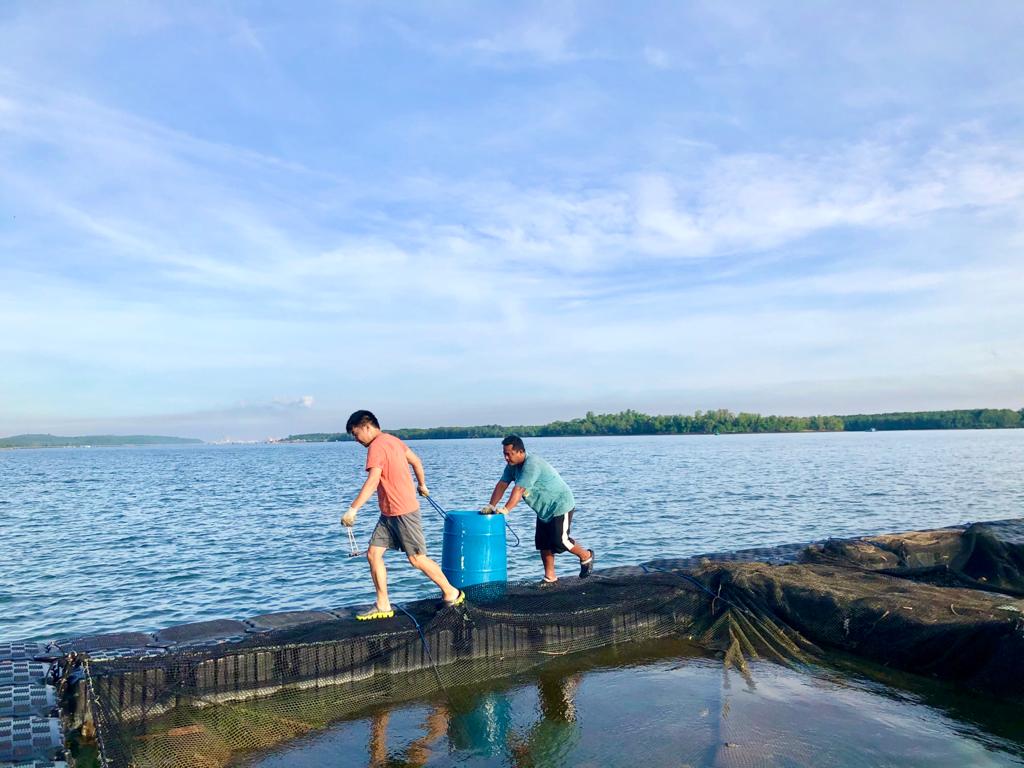Diving into the depths of where our meals originate reveals more than just the source - it uncovers a ripple effect on our environment.
In the realm of seafood, the journey from the sparkling waters of local fish farms to the warmth of your dining table is a testament to the power of sustainable choices.
As we embark on this exploration of local aquaculture, let's delve into the significant role these farms play in nurturing our planet's health alongside our own.
Join us as we navigate the waters from farm to fork, highlighting the crucial environmental benefits local fish farms bring to the table.
Reducing the Carbon Footprint with Every Bite
One of the most significant ways local fish farms are making waves in environmental conservation is by drastically cutting down the carbon footprint associated with seafood.
But how, you ask? The secret lies in the magic of short supply chains.
Short and Sweet Supply Chains: By sourcing seafood from local farms, we skip the long, emission-heavy transportation routes typically required to bring ocean-caught fish to your plate.
This means significantly fewer greenhouse gases are released into our atmosphere—a win for the planet!
A Deeper Dive into Carbon Savings:
Local fish farms aren't just about proximity; they're about practicing responsible aquaculture that respects and preserves our aquatic environments.
Sustainable practices, such as using feed made from renewable resources or implementing energy-efficient systems, contribute further to shrinking the carbon footprint of every fish farmed and feasted upon.
Sustainable Practices: The Heart of Local Fish Farms
Sustainability isn't just a buzzword; it's the backbone of modern aquaculture.
Local fish farms are pioneering innovative methods to ensure that our seafood cravings don't compromise the health of our oceans.
Eco-Friendly Farming Practices:
- Reduced Environmental Impact on Land: By using the open sea for farming fish, there is minimal to no use of land, which reduces the environmental footprint associated with land clearing, water use, and terrestrial ecosystem disruption that can occur with land-based aquaculture systems.
- Natural Water Quality Management: In the open sea, the vast volume of water and natural currents help to disperse waste products (such as fish excrement and uneaten feed) more effectively than in closed systems. This natural dilution process can mitigate the risk of accumulating pollutants and reduce the impact on water quality, making it less dependent on artificial filtration systems.
- Lower Energy Consumption: Offshore farms often require less energy than Recirculating Aquaculture Systems (RAS) because they rely on the natural environment for fish growth conditions (e.g., water temperature, oxygen levels) and water circulation. RAS, on the other hand, demands significant energy for water treatment, oxygenation, and temperature control.
- Promotion of Local Marine Biodiversity: When managed responsibly, open sea farms can coexist with local marine ecosystems. Some setups can even provide shelter and feeding grounds for wild fish populations, potentially enhancing local biodiversity.
- Sustainable Feed Sources: Open sea farms have the potential to use more sustainable feed sources. For instance, they can integrate multitrophic aquaculture, where the waste from one species serves as feed for another, mimicking natural ecosystems and reducing the need for external feed inputs.
Beyond the Farm: Sustainable fish farming also means maintaining the delicate balance of marine ecosystems.
Practices like selective breeding, habitat restoration, and the prevention of escape into the wild ensure that local fish farms support biodiversity rather than threaten it.
Why Choosing Local Matters
Opting for seafood from local fish farms isn't just a step toward healthier eating; it's a leap towards a healthier planet.
Here's why making this choice matters:
Supporting Local Economies: Beyond the environmental benefits, buying local seafood fosters community resilience, supporting the livelihoods of local farmers and their families.
A Fresh Perspective on Seafood:
Freshness is paramount in the world of seafood, and local farms deliver just that.
With shorter travel times from farm to table, the fish retains more nutrients, offering you a tastier and more nutritious meal.
Dive Deeper with "The Sampan Catch"
To truly feel the pulse of local aquaculture, immerse yourself in "A Day in the Life of My Fish Farmer" by "The Sampan Catch." This video invites you to witness the dedication behind sustainable seafood farming, fostering a deeper connection with the food on your plate. Feel the passion and precision that go into every harvest, and understand why choosing "The Sampan Catch" is a choice for sustainability: Watch here.
Embracing seafood from local fish farms is more than a dietary choice—it's a commitment to fostering a sustainable relationship with our oceans.
As we continue to navigate the tides of environmental change, let's remember the power of local choices in making a global impact. After all, every fish, every farm, and every forkful counts towards a greener, bluer planet.

